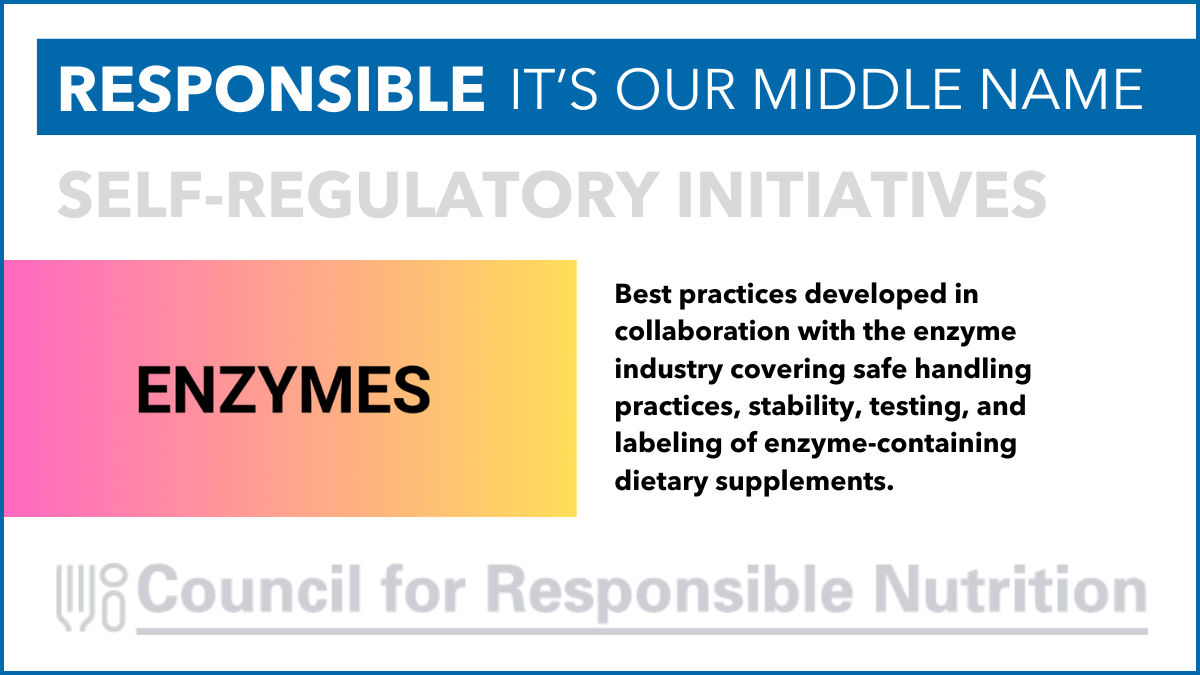This voluntary Best Practices Guide was prepared to help promote the safe production and use of enzyme-containing dietary supplements and to facilitate transparency and uniformity in the dietary supplement and enzyme industries. The Best Practices Guide was prepared with input from the dietary supplement and enzyme industries and takes into account the current U.S. laws and government regulatory requirements. It reflects the most up-to-date science and industry thinking with regard to the safe handling of enzyme-containing dietary supplements and will be updated as best practices evolve.
The Best Practices Guide is not intended to be a substitute for consultation with legal and regulatory counsel in all jurisdictions, including in the United States. Get the Guidelines
About Enzymes
Enzymes are proteins with highly specialized catalytic functions that are produced by all living organisms and are responsible for many essential biochemical reactions in microorganisms, plants, animals, and human beings. Enzymes are essential for all metabolic processes, but are not themselves alive. Although, like all other proteins, enzymes are composed of amino acids, they differ in function in that they facilitate biochemical reactions without undergoing change themselves. As highly efficient natural protein catalysts, enzymes help biochemical reactions take place quickly and efficiently. This catalytic capability is what makes enzymes unique. Enzymes not only work efficiently and rapidly, but they are also biodegradable.
Enzymes used in dietary supplements are usually referred to by their common names and may be of animal, plant, fungal, or bacterial origin. Most enzymes are very specific in their ability to catalyze only certain chemical reactions; this high degree of specificity and strong catalytic activity are the most important functional properties of enzymes. Commercial enzyme preparations usually contain several enzymes that have catalytic activities other than those for which they are standardized (often termed “side activities”).



